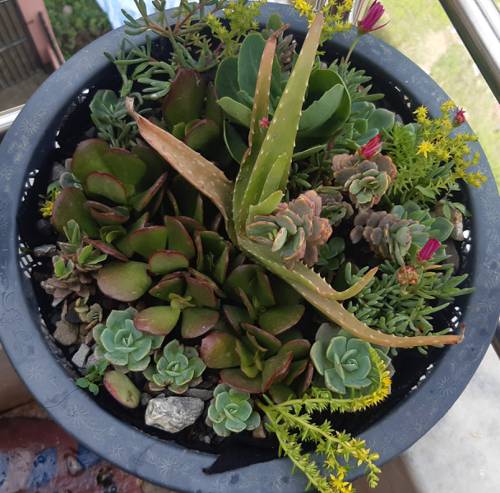
FAQ About Indoor Plant Phytoremediation for Air Quality

What is indoor plant phytoremediation?
Indoor plant phytoremediation refers to the use of plants to remove, sequester, or neutralize pollutants from the air inside buildings. Certain plants have been found to effectively reduce levels of volatile organic compounds (VOCs), carbon dioxide, and other harmful substances, directly improving indoor air quality.

How do indoor plants improve air quality?
Indoor plants improve air quality by absorbing pollutants through their leaves and roots and by facilitating microbial activity in the soil that breaks down contaminants. The process of photosynthesis also contributes to increasing oxygen levels while reducing carbon dioxide in the air.

Which indoor plants are best for phytoremediation?
Some of the best indoor plants for phytoremediation include the spider plant, snake plant, peace lily, and English ivy. These plants are particularly effective at removing toxins such as formaldehyde, benzene, and xylene from the air.

Can all indoor plants clean the air?
Not all indoor plants have the ability to effectively clean the air. While many may offer some benefits by increasing humidity and reducing dust, only specific plants demonstrate significant phytoremediation capabilities, such as those identified by NASA's Clean Air Study, including peace lilies and snake plants.

How does the soil in potted plants contribute to air purification?
The soil in potted plants contains microorganisms that play a vital role in breaking down air pollutants absorbed by the plants. Through this microbial activity, the soil helps transform harmful substances into less toxic forms, aiding in the purification process.

What pollutants can indoor plants remove?
Indoor plants can remove various air pollutants, including formaldehyde, benzene, trichloroethylene, xylene, and ammonia. These toxins are commonly found in household items like cleaners, furniture, paint, and carpets.

How many plants do I need to improve air quality at home?
While there isn't a definitive rule, research suggests that placing one large plant per 100 square feet may significantly benefit air quality. However, having a variety of small to medium-sized plants can also achieve similar effects through collective phytoremediation actions.

How do I care for indoor plants used for phytoremediation?
Caring for indoor plants used for phytoremediation involves ensuring they receive adequate light, water, and humidity based on their specific needs. Regular pruning, repotting as needed, and monitoring for pests or diseases are also important for maintaining their health and effectiveness.

Can indoor plants eliminate all indoor air toxins?
While certain indoor plants are effective at reducing levels of specific toxins, they cannot completely eliminate all indoor air pollutants on their own. They are best used in conjunction with other air quality management methods, such as ventilation and minimizing indoor pollution sources.

Is there scientific evidence supporting indoor plant phytoremediation?
Yes, scientific studies, such as NASA's Clean Air Study, have demonstrated that indoor plants can effectively remove certain volatile organic compounds from the air. However, the extent of their impact in typical home settings may vary and is often supplemented by additional research.

Do indoor plants require special conditions to purify air?
Indoor plants used for phytoremediation do not necessarily require special conditions beyond what is needed for their general health. Ensuring they have sufficient light, water, and nutrient-rich soil will help them perform their air-purifying functions more effectively.

What is the role of NASA in studying indoor plant air purification?
NASA conducted a landmark study, known as the Clean Air Study, which investigated the use of plants to purify air in sealed environments, such as space stations. This study helped identify several houseplants that can effectively remove indoor air pollutants.

Are there any drawbacks to using plants for air purification?
One potential drawback is that indoor plants typically affect only low concentrations of pollutants and work slowly compared to mechanical air purifiers. Also, people sensitive to mold or pollen should be cautious about houseplants, as these can exacerbate allergies.

How long does it take for plants to improve air quality?
The time it takes for plants to improve air quality varies based on the size and number of plants, the pollutant concentration, and environmental conditions. Generally, noticeable improvements can take several weeks to months under optimal conditions.

Are there any specific care tips for maximizing air purification by plants?
To maximize air purification, ensure plants are well-cared-for with proper light, water, and soil conditions. Regularly clean their leaves to allow unobstructed absorption of air pollutants, and group different species to create a diverse microenvironment for enhanced phytoremediation.

Does plant size affect its ability to purify air?
Yes, generally larger plants have a greater capacity to purify air due to their larger leaf surface area, which allows them to absorb more pollutants. However, a group of smaller plants can also collectively purify the air effectively.

Can artificial lights support plants used in phytoremediation?
Yes, artificial lights such as fluorescent or LED grow lights can support indoor plants used for phytoremediation. They provide the necessary light intensity and spectrum that help these plants perform photosynthesis effectively in environments lacking sufficient natural light.

Do flowering plants have better phytoremediation capabilities?
Flowering is not necessarily indicative of better phytoremediation capabilities. The ability to purify air is more related to the plant species and their capacity to take up pollutants through leaves and roots, regardless of whether the plant flowers.

Can indoor plants reduce mold and bacteria levels?
While indoor plants themselves do not significantly reduce mold and bacteria levels in the air, the microorganisms within the soil can contribute to reducing airborne microbes by altering the local environment and improving overall air quality.
